Located off the coast of Ecuador, this island chain is home to a wide variety of unique flora and fauna. The animals that make their home here even inspired Charles Darwin to write his famous book on evolution, which was controversial at the time. Travelers still come here to see the unusual creatures who inhabit the islands. After all, giant tortoises, blue footed boobies, penguins, sea lions, seals, large crabs, albatrosses, and iguanas are just some of the many interesting species found in the area.

Image Source: Skylark via Pixabay.
The Galapagos Islands have two distinct seasons. The rainy season runs between December and May. However, the showers are sporadic and it’s often sunny afterwards. Warmer weather and calmer seas are another reason to visit at that time of year. The drier season between June and November has slightly cooler temperatures. The ocean can be rougher at this time but there’s more chance of spotting local marine animals. Even so, facilities on the islands may be All of the islands’ facilities may especially limited between September and November, which is the off-season for travelers.
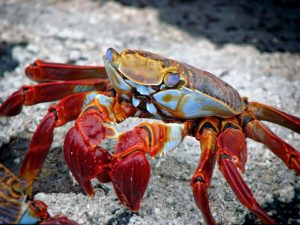
Image Source: Skylark via Pixabay.
Travelers who want to avoid the crowds should avoid planning their visit between the months between June and September. The period between mid-January and mid-December also sees large numbers of tourists stopping by the Galapagos. However, the animals are most active during periods of warmer weather so there’s a good reason for the summer crowds. Another way to avoid being surrounded by people is to select tour companies that limit admission to fewer than 20 participants. Otherwise the small beaches that you will encounter could easily seem packed.
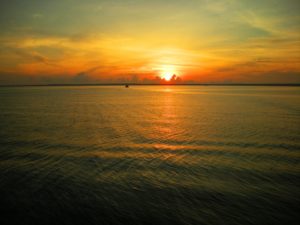
Image Source: Public Domain Pictures via Pixabay.
There is a $120 fee per person for entering the Galapagos Island National Park and visitors must also purchase a tourist control card. These fees may or may not be included in guided tours that you may plan on taking. Be sure to factor that into your final decision before committing to an operator. There are additionally concerns that the abundance of tourist is damaging the islands’ ecosystem so choose your travel provider with great care. You’ll definitely want to make sure the company that you use has up-to-date equipment and that their facilities are in good working order to avoid problems later on.
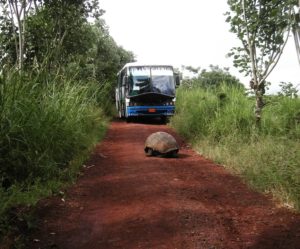
Image Source: Public Domain Pictures via Pixabay.
Planes from Quito land at either Baltra’s Seymour Airport (GPS) or the one on San Cristobal Island (SCY). Flights from both places travel to Quito, Guayaquil, and the other airport in the island chain. However, it’s best to book flights from Quito, Ecuador out to the islands in advance because these fill up quickly.
Boats run between Santa Cruz, Isabela, and San Cristobal islands at a cost of $30 per person on one-way trip. Or you can save about $5 by purchasing a return fare in advance, if you plan on going back to your original destination. Travelers should nonetheless keep in mind that most of the guided tours leave from the island of Santa Cruz. But you can visit the islands without a guided tour for a somewhat cheaper vacation. More details can be found here.

Image Source: Monika P. via Pixabay.
In any event, those coming to the Galapagos Islands will want to bring plenty of gear to protect them from the sun such as hats, sunglasses, and sunscreen. Packing list should also include items such as phone covers, waterproof shoes, and a camera that can take shots underwater. Cash is also good to have on hand if you plan on booking a last minute tour. Small bills are likewise needed for the buses to and from the airports.
Travelers may even want to bring prepackaged snack foods and non-perishables such as pasta with them from the mainland to avoid the high costs at the local grocery stores. However, they should additionally be aware that fruits, vegetables, and other such items cannot be brought in on the airplanes.

Image Source: Unsplash via Pixabay.
No visa is needed for American citizens that plan on a short stay in Ecuador. However, up-to-date yellow fever vaccinations are a must, particularly if your trip is also scheduled to include other countries or parts of the Amazon River basin. Hepatitis A and B vaccines are also recommended. The United States Government additionally recommends against visiting the northern portions of the country. Their website points out a high instance of crime such as pick-pocketing and mugging in the country, so visitors will definitely want to keep that in mind when making their travel plans.
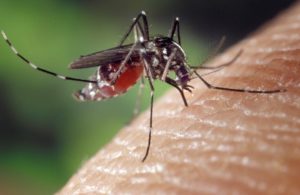
Image Source: Fotoshop Tofs via Pixabay.
Meanwhile, the United Kingdom government’s website states that visitors to the Galapagos Islands will want to sure their insurance covers air evacuations. Although there is a local hospital, facilities are limited and may not be up to all emergency situations that could arise. Due to threats from the Zika virus, pregnant women are advised to avoid the area. The U.K. government website also points out particular districts to avoid in both Quito and Guyaquil, so look into that if you’re making plans to stay overnight in either city. They too advise against traveling near the northern Colombian border.
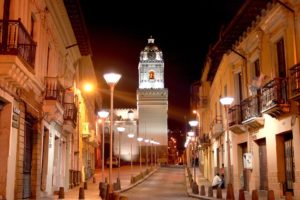
Quito, Ecuador.
Image Source: Pato San via Pixabay.
While crime tends to be a feature of large Ecuadorian cities and some regions, the islands are widely considered to be quite safe. Aside from the occasional bad wildlife encounter, there’s nothing much to worry about once you get there. The tap water in Puerto Ayora is nonetheless reported to be undrinkable.
However, most travelers will have to visit either Quito or Guyaquil in order to get to the Galapagos Islands. Of course, taking sensible precautions are the best way to avoid trouble, particularly if you appear to be a foreigner. You’ll definitely want to avoid wearing flashy, expensive items that could make you a target. It’s also important that you keep a close eye on your belongings as you make your way out to the islands.
Image Source: Paul Krawczuk via Flickr and CC 2.0
Sources: Travel Channel; Wikipedia; Wikitravel; www.travel.state.gov; www.gov.uk; Trip Advisor; USA Today; Thrifty Nomads





